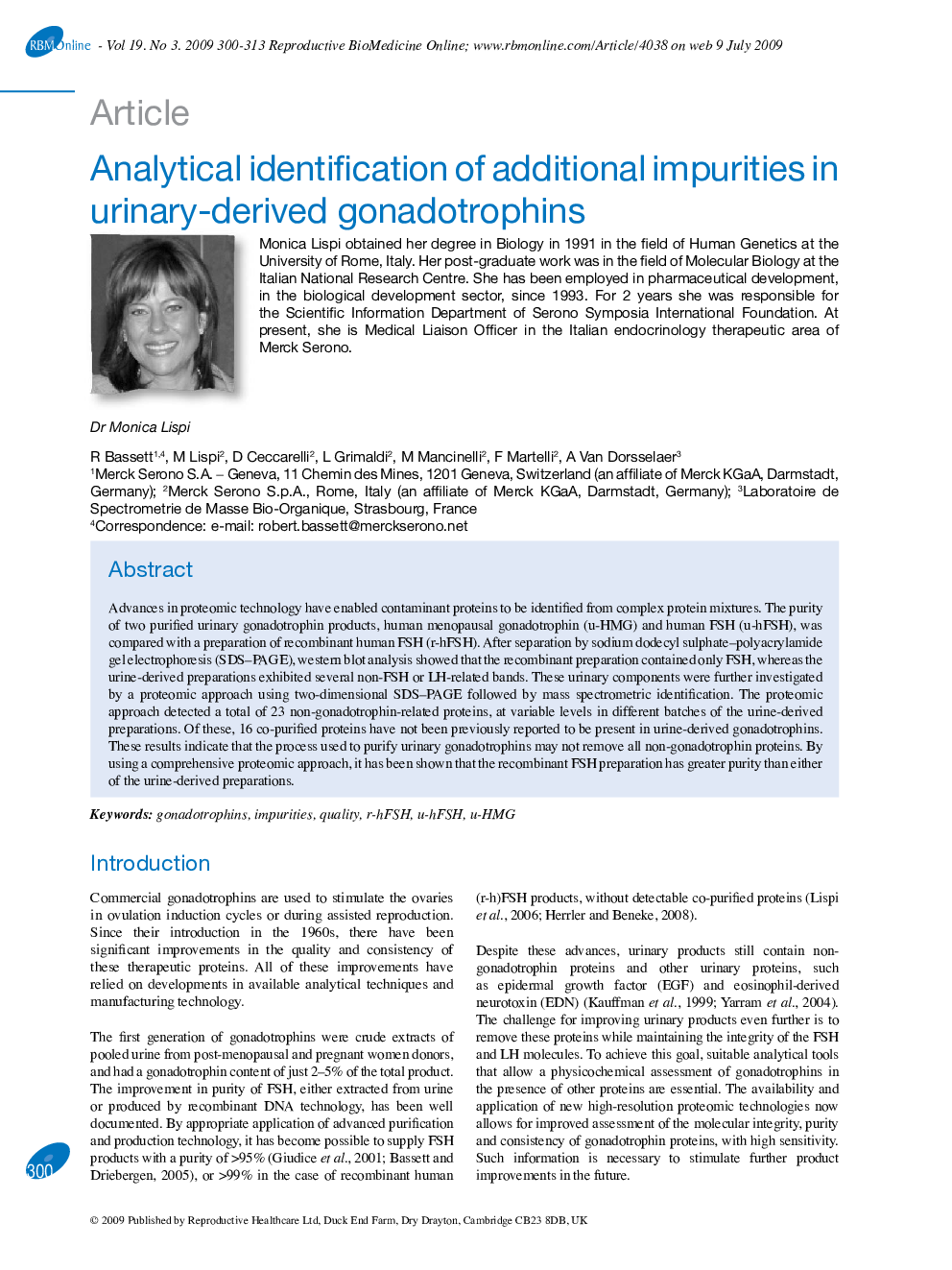| Article ID | Journal | Published Year | Pages | File Type |
|---|---|---|---|---|
| 3971824 | Reproductive BioMedicine Online | 2009 | 14 Pages |
Advances in proteomic technology have enabled contaminant proteins to be identified from complex protein mixtures. The purity of two purified urinary gonadotrophin products, human menopausal gonadotrophin (u-HMG) and human FSH (u-hFSH), was compared with a preparation of recombinant human FSH (r-hFSH). After separation by sodium dodecyl sulphate–polyacrylamide gel electrophoresis (SDS–PAGE), western blot analysis showed that the recombinant preparation contained only FSH, whereas the urine-derived preparations exhibited several non-FSH or LH-related bands. These urinary components were further investigated by a proteomic approach using two-dimensional SDS–PAGE followed by mass spectrometric identification. The proteomic approach detected a total of 23 non-gonadotrophin-related proteins, at variable levels in different batches of the urine-derived preparations. Of these, 16 co-purified proteins have not been previously reported to be present in urine-derived gonadotrophins. These results indicate that the process used to purify urinary gonadotrophins may not remove all non-gonadotrophin proteins. By using a comprehensive proteomic approach, it has been shown that the recombinant FSH preparation has greater purity than either of the urine-derived preparations.
